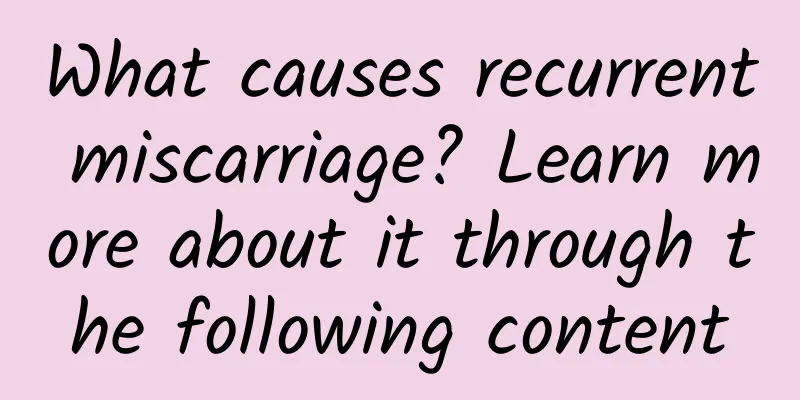Symptoms of bilateral adnexitis in women

|
Symptoms of bilateral adnexitis in women vary. If you experience lower abdominal pain or fever, you should seek medical attention as soon as possible to prevent the condition from getting worse. Possible symptoms include: lower abdominal pain, irregular vaginal bleeding, frequent or urgent urination. It may also be accompanied by systemic symptoms such as nausea and vomiting. 1. Lower abdominal pain: This is the most common symptom of bilateral adnexitis in women. The pain is usually located in the lower abdomen and may be persistent or paroxysmal. Most women may feel worse pain during menstruation. This is due to inflammation causing tissue swelling and irritation to nerve endings. 2. Fever: Due to inflammation, patients often experience fever. A rise in body temperature usually indicates an inflammatory response in the body. If you find yourself with an unexplained persistent low-grade fever, you should consider the possibility of bilateral adnexitis and seek medical attention immediately. 3. Irregular vaginal bleeding: Female adnexitis may also cause irregular menstruation or even abnormal bleeding during non-menstrual periods. Local tissue damage caused by adnexitis may affect the normal shedding and repair process of the endometrium. 4. Difficulty urinating: Urinary tract symptoms such as frequent urination and urgency may also occur in female adnexitis. This is caused by the surrounding tissues compressing the urinary tract due to inflammation. 5. Nausea and vomiting: When inflammation is more serious, it may be accompanied by systemic symptoms such as nausea and vomiting. This symptom is often mistaken for a gastrointestinal disease, so it is necessary to pay attention to the difference. If you suspect you may have adnexitis, you should see a doctor for professional examination and diagnosis. Your doctor may recommend an ultrasound to determine the specific inflammation. Treatment usually includes antibiotic treatment to eliminate the source of infection, and in severe cases, surgical intervention may be required to prevent the condition from worsening. Paying attention to personal hygiene, a proper diet, and moderate exercise may help improve symptoms and promote recovery. With timely treatment and effective preventive measures, most women can fully recover and return to normal life. |
<<: Causes of bleeding in urine due to vaginitis
>>: Can I take Guyuan Paste if I have uterine cold and dysmenorrhea?
Recommend
What are the diagnostic criteria for vulvar leukoplakia?
Vulvar leukoplakia is a common gynecological dise...
Summer rainbow diet detoxification and weight loss! 5 Most Colorful Fruits and Vegetables
In the hot summer, eating more fruits and vegetab...
Can I drink motherwort granules during menstruation?
You can drink Motherwort granules during menstrua...
What is bilateral polycystic ovary?
Polycystic ovary syndrome (PCOS) is the main caus...
What are the specific dangers of candidal vaginitis?
Many people do not know what candidal vaginitis i...
How much does it cost to treat endometrial tuberculosis?
Nowadays, there are many methods for treating end...
Help a child who has just recovered from a serious illness fulfill his dream of running! Chen Peiqi made a heartwarming video to recommend the Credit Suisse charity run
Road running is a pleasure for healthy people, bu...
What should I do if my endometrium is thick and I don’t have my period?
What should I do if my endometrium is thick and I...
What are the early symptoms of ovarian cysts and what are the dangers
What are the early symptoms of ovarian cysts? Wha...
How can women cure chronic cervicitis? Several effective treatments for chronic cervicitis
Chronic cervicitis is difficult to treat and is p...
How to take good care of irregular menstruation in life?
Irregular menstruation is one of the many gynecol...
Should I take Motherwort or New Biopharmaceutical Granules after a miscarriage? Take under the guidance of a doctor
After an artificial abortion, the wound surface o...
What are the symptoms of endometrial tuberculosis?
For women of childbearing age, endometrial tuberc...
What should I do if my vaginal discharge is like tofu dregs and my vulva is itchy? It is recommended that patients check first
Women's leucorrhea has the properties of tofu...
What is the best food for irregular menstruation?
Women have menstruation every month, but some wom...









